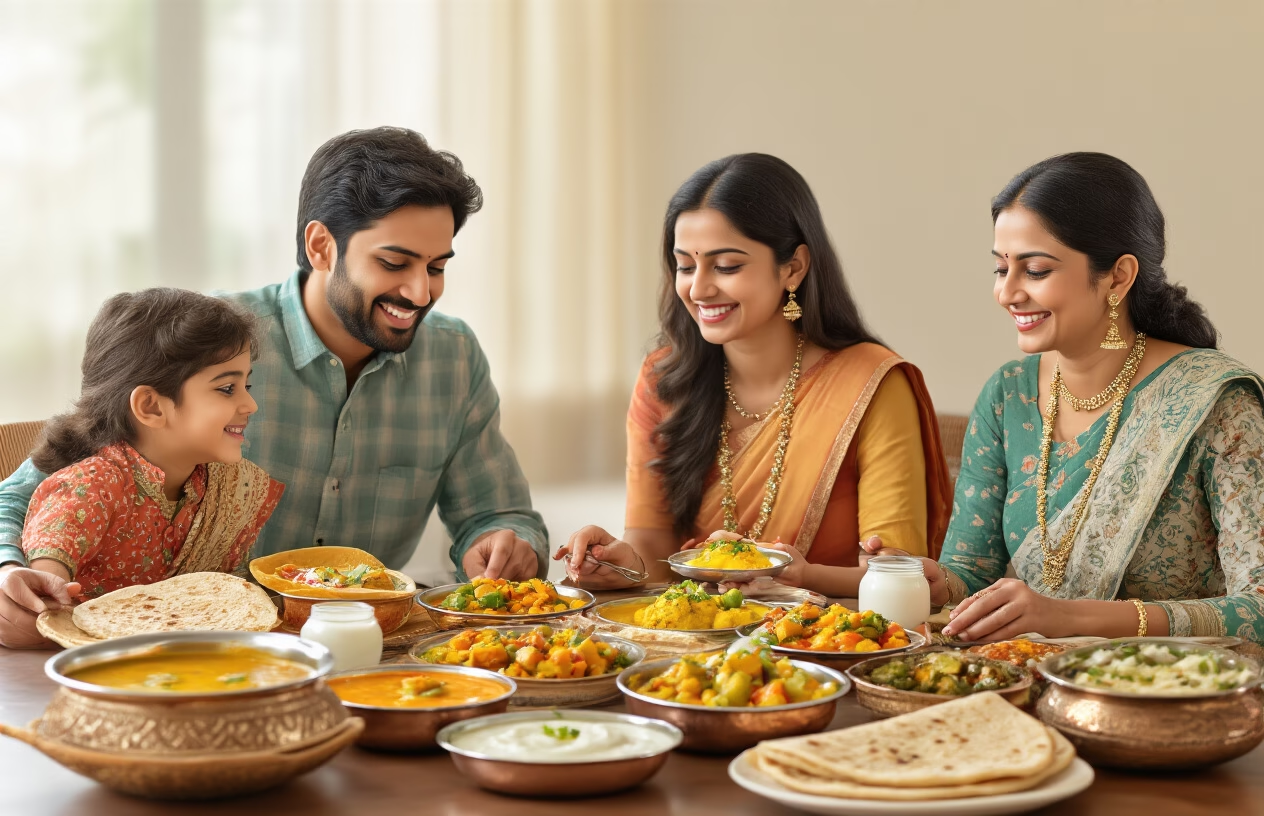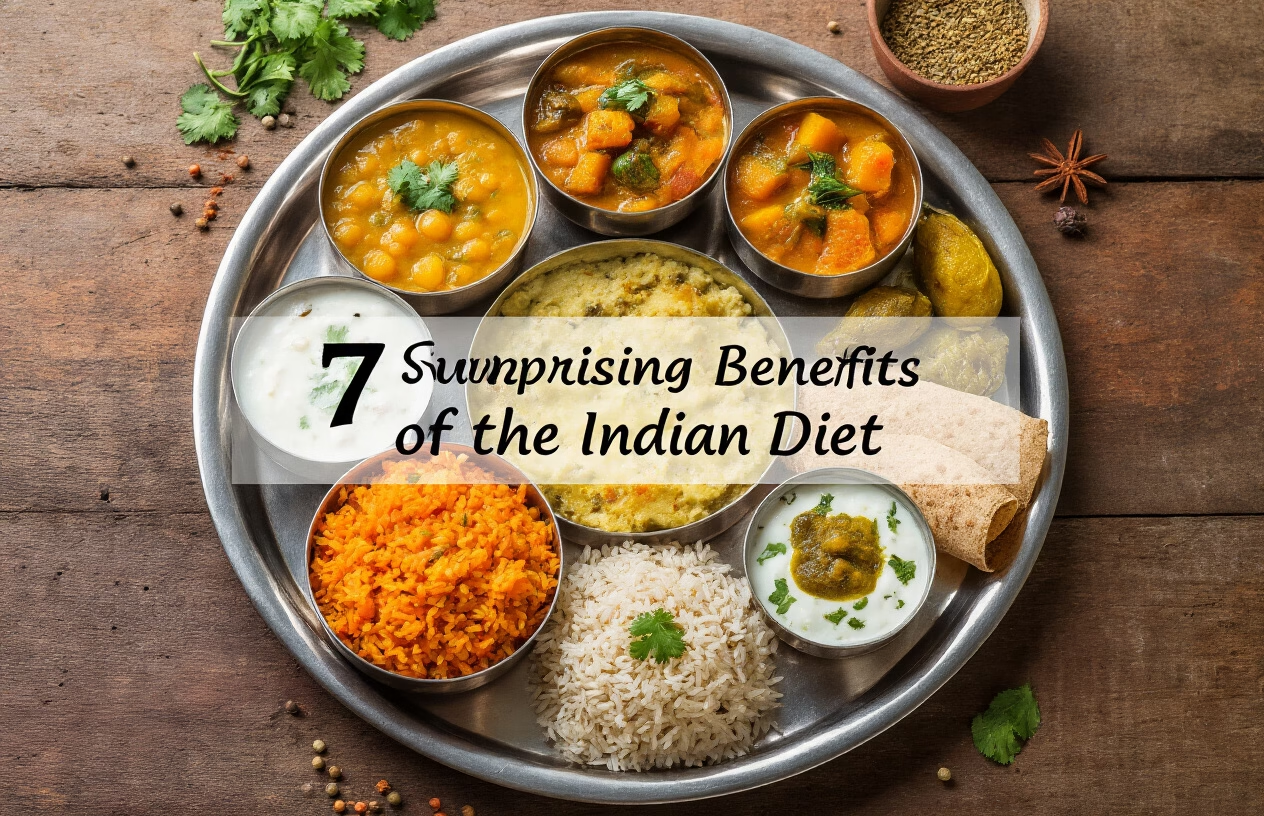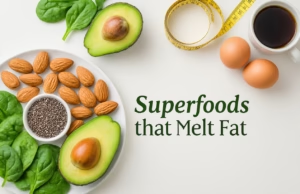Ever wondered why your cousin who swears by her Indian diet looks 10 years younger than she actually is? It’s not just genes or yoga.
The truth is, traditional Indian eating patterns pack some serious health punches that Western diets simply don’t. Following an Indian diet plan could transform your health in ways you never imagined.
I’ve spent years researching nutritional approaches, and I can tell you: the humble Indian thali might be the most underrated superfood system on the planet. The perfect balance of spices, proteins, and complex carbs creates a metabolic sweet spot that’s hard to match.
But here’s what nobody’s talking about: the third benefit on our list actually reversed some participants’ health markers in clinical studies. How? That’s where things get interesting…
Subscribe for good and useful information.
Weight Management Without Extreme Dieting

Weight Management Without Extreme Dieting
A. Natural portion control through traditional serving methods
Traditional Indian meals are genius at portion control without the misery of counting calories. Those little katoris (steel bowls) naturally limit how much you eat, while thalis divide food into smaller, manageable portions. You’re satisfied without overeating—brilliant simplicity our ancestors figured out centuries ago!
B. Fiber-rich meals that increase satiety
Indian cuisine packs a fiber punch that keeps hunger locked away for hours. Lentils, whole grains like bajra and jowar, and veggie-loaded sabzis fill you up with fewer calories. That post-meal fullness isn’t just satisfaction—it’s fiber working its magic, keeping you from raiding the fridge at midnight.
C. Metabolism-boosting spices and ingredients
Those spices making your taste buds dance? They’re secretly firing up your metabolism too. Turmeric, ginger, black pepper and cinnamon don’t just flavor—they boost calorie burning. Add curry leaves and mustard seeds, and you’ve got a metabolic party happening right on your plate, no extreme diets required.
Disease Prevention Through Ancient Wisdom

Anti-inflammatory properties of Indian spices
Turmeric, ginger, and cloves aren’t just flavor bombs—they’re inflammation fighters that ancient Indians knew about centuries ago. When you toss these spices into your daily cooking, you’re basically giving your body a natural defense system against chronic inflammation linked to everything from arthritis to heart disease.
Diabetes management through balanced meals
The traditional Indian thali isn’t random—it’s genius in disguise. By combining complex carbs like millet with protein-rich lentils and fibrous vegetables, this approach naturally regulates blood sugar levels. Many Indians have been unknowingly practicing diabetes prevention at their dinner tables for generations.
Heart-healthy cooking methods and ingredients
Indian cooking techniques like steaming, boiling, and quick-sautéing preserve nutrients while minimizing harmful compounds. Paired with heart heroes like garlic, onions, and fenugreek seeds, these methods keep arteries clear and blood pressure in check—explaining why traditional communities often show lower rates of cardiovascular issues.
Enhanced Mental Clarity and Cognitive Function

Brain-boosting nutrients in common Indian foods
Turmeric, a staple in Indian cooking, contains curcumin that fights brain inflammation and potentially improves memory. Meanwhile, the omega-3 fatty acids in flaxseeds (common in Indian diets) support neuron function. Coconut oil provides medium-chain triglycerides that give your brain alternative fuel when glucose runs low.
Stress reduction through adaptogenic herbs and spices
Indian kitchens are treasure troves of adaptogenic herbs that help your body handle stress better. Ashwagandha balances cortisol levels, while Holy Basil (Tulsi) reduces anxiety naturally. Add a pinch of saffron to your chai, and you’ve got a natural mood booster that rivals prescription alternatives without the side effects.
Mindful eating practices in traditional Indian dining
Traditional Indian meal customs naturally promote mindfulness – eating with your hands connects you directly with your food, enhancing awareness. The sequence of serving different flavors (starting with bitter, ending with sweet) trains your brain to be present. Many Indians also practice silence during initial bites, focusing completely on taste rather than conversation.
Sustainable Energy Throughout the Day

Sustainable Energy Throughout the Day
A. Complex carbohydrates for steady energy release
Ditch the energy rollercoaster! The Indian diet’s backbone of whole grains like brown rice, millet and whole wheat rotis delivers slow-releasing fuel that keeps you humming along for hours. Unlike refined carbs that spike your blood sugar then crash you hard, these complex carbs maintain steady energy levels when you need it most.
B. Protein combinations for lasting fullness
The genius of Indian food? Those perfect protein combos that keep hunger at bay without weighing you down. Dal-chawal isn’t just comfort food—it’s a complete protein powerhouse. When lentils meet rice, they create all essential amino acids your body craves. These clever pairings mean you’re not diving into the snack drawer by 3pm.
C. Reduced dependence on caffeine and stimulants
Who needs three espressos when your meals actually fuel you properly? Traditional Indian diets naturally reduce your reliance on caffeine fixes. The balanced combination of proteins, fats and complex carbs keeps energy levels stable without the jittery highs and crashing lows that send you running for another cup. Many Indians prefer herbal teas like tulsi or ginger instead.
D. Traditional meal timing for optimal energy
Indians figured out meal timing centuries ago. A hearty breakfast, substantial lunch when digestion is strongest, and lighter dinner hours before bed—this isn’t trendy biohacking, it’s ancient wisdom. This natural rhythm aligns with your body’s metabolic peaks, ensuring energy flows when you need it and doesn’t disrupt sleep when you don’t.
Budget-Friendly Yet Nutritionally Complete

Budget-Friendly Yet Nutritionally Complete
A. Cost-effectiveness of plant-based protein sources
The Indian diet’s genius lies in its affordable protein sources. Lentils, chickpeas, and beans cost pennies compared to meat, while delivering similar protein content. Look at dal – a staple that costs under $2 per pound but packs 18g of protein per cup when cooked. That’s budget-friendly nutrition at its finest!
B. Bulk cooking and storage traditions that save money
Indian households mastered meal prep before it was trendy! Making large batches of curry bases, storing homemade spice blends, and fermenting foods aren’t just traditional practices – they’re money-saving hacks. My grandmother’s weekend cooking sessions produced enough dal and sabzi to last days, saving both time and cash throughout the week.
C. Versatility of basic ingredients across multiple dishes
One bag of rice becomes pulao, kheer, idli, or dosa. Those tomatoes? Use them in curry, chutney, or rasam. The humble potato transforms into aloo gobi, samosas, or vada. Indian cooking stretches ingredients across countless dishes, making it the ultimate budget-friendly cuisine where nothing goes to waste.
Conclusion: Indian Diet Plan

The Indian diet plan offers remarkable benefits that extend far beyond simple nutrition. From effortless weight management through balanced, fiber-rich meals to disease prevention powered by anti-inflammatory spices and antioxidant-packed ingredients, this ancestral approach to eating nourishes both body and mind. The surprising cognitive benefits and sustained energy levels experienced by those following traditional Indian eating patterns demonstrate why this dietary approach has withstood the test of time.
Embracing an Indian diet plan doesn’t require a complete lifestyle overhaul or expensive specialty ingredients. With its emphasis on wholesome, plant-forward meals enhanced by mindful spice combinations, this approach represents an accessible path to improved wellbeing that fits most budgets and lifestyles. Consider incorporating elements of the Indian dietary tradition into your meals this week—your body, mind, and wallet will thank you for it.
#Indian diet plan #Indian vegetarian diet #Traditional foods #Benefits #Diet Plan #Indian diet plan #Indian vegetarian diet #Traditional foods #Benefits #Diet Plan
Follow Us On:










